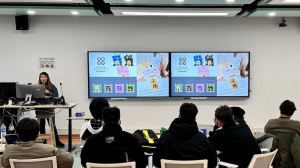Brief Introduction to Operating Systems
Every computer needs an operating system (OS) to function properly. Through managing a computer’s software and hardware resources, OS provides users an interface or environment to work with. Many computer users are familiar with Microsoft’s Windows as a desktop OS because it has held the commanding lead in PC market, followed by Apple’s MacOS. According to Statcounter.com’s figures from ‘Desktop Operating System Market Share Worldwide- August 2022’, 74.73% of desktop devices run on Windows’ platform, whereas 14.4% on Apple’s. These two systems altogether have ruled over 89% of the global desktop OS market. However, the spotlight today is none of these two popular OSes. Instead, it is the third runner-up on the same list with merely 2.81% of market share, its name is Linux.
What Is Linux?

Linux can be found on desktop computers, mobile and embedded devices but it is mainly on servers. Linux has many different versions, or distribution, for different user groups. Usually, an entity may distribute a Linux kernel along with all the necessary software and utilities so that it can be used as an operating system. For instance, Ubuntu is a popular Linux distribution for its user-friendly graphical interface. Another example is Kali Linux, this Linux distribution is famous for its extensive toolkit for security and penetration testing features. To highlight the differences between Linux and Windows/MacOS, Linux is open-source and developed by community around the world. Unlike proprietary software, its license (GPL) is free for both commercial and non-commercial uses. Linux is often operated through a command-line interface (CLI), contrasting with the graphical user interface (GUI) found on Windows/MacOS (even though most OSes support CLI and GUI simultaneously).
For those who are interested, you can try Linux in a web browser directly, no installation required. Thanks to virtualization technology, JSLinux is a good option for such purpose. To begin, simply enter this URL in web browser: https://bellard.org/jslinux/ then click the first start-up link to proceed. JSLinux should start up within a few seconds (depends on connection speed).

Why Should Students Know Linux?
In fact, many state-of-the-art systems in technology fields including big data analytics, artificial intelligence, and data science are often developed and operated in open-source environments like Linux. Luckily, Linux is not difficult to learn. Sometimes, the commands in Linux are even more intuitive. For IFTM students, the easy way to start learning Linux would be joining IFTM’s AAEP project. In 2021, IFTM and Alibaba Cloud Macao signed an agreement (AAEP) to empower IFTM students with cloud computing technologies. Through Alibaba’s cloud platform, students may develop different IT projects. However, just like other cloud platforms, basic Linux skill is preferred to manage Alibaba cloud servers. With Alibaba certified trainers in-house, students would learn to use Linux to manage their cloud platform and initialize creative projects on Alibaba Cloud. Students may also take one step further to participate in the Cloud Computing certification programme offered by Alibaba Cloud. Back in June, five students were certified as Alibaba Cloud ACA holders successfully.
Learn more about Alibaba’s AAEP programme here: https://edu.alibabacloud.com/campus/index or contact Mr. Lam (joe@iftm.edu.mo) for inquiry.









